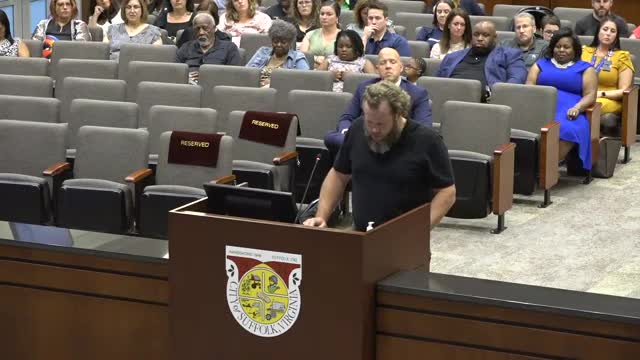Community voices concerns over school rezoning and diversity
June 14, 2024 | SUFFOLK CITY PBLC SCHS, School Districts, Virginia

This article was created by AI summarizing key points discussed. AI makes mistakes, so for full details and context, please refer to the video of the full meeting. Please report any errors so we can fix them. Report an error »

During a recent government meeting, community members expressed significant concerns regarding a proposed school rezoning plan in Suffolk, Virginia, primarily focused on desegregation efforts. A resident, speaking from the perspective of a concerned taxpayer, highlighted the demographic composition of Suffolk, noting a slight majority of white, non-Hispanic residents (approximately 42,000) compared to black or African American residents (around 39,000) across the city’s 399 square miles.
The speaker questioned the rationale behind the proposal, suggesting that the lack of diversity in schools is a reflection of residential patterns rather than a failure of the school system. They emphasized that current laws protect individuals from discrimination in housing, implying that families can choose where to live based on their financial means, which in turn influences school demographics.
Concerns were also raised about the adequacy of bus drivers to support the proposed changes, with the speaker indicating that the current workforce is insufficient and expressing skepticism about future hiring. The presentation referenced by the speaker indicated that all 11 elementary schools would be over capacity by approximately 100 students, raising questions about the feasibility of the plan.
Furthermore, the resident clarified misconceptions regarding the legal basis for the rezoning, asserting that the Department of Justice did not mandate the changes. Instead, they referenced a 2014 Supreme Court order specific to Suffolk Public Schools, which aimed to address desegregation but was misrepresented as a current court order requiring immediate action. The speaker pointed out that a 2017 consent order outlined a path toward achieving full unitary status within three years, contingent upon the district's compliance with specific requirements, including modifications to school zones and improvements in student discipline practices.
The meeting underscored the complexities surrounding school rezoning, particularly in relation to historical context, community demographics, and logistical challenges, as stakeholders continue to navigate the implications of desegregation efforts in Suffolk.
The speaker questioned the rationale behind the proposal, suggesting that the lack of diversity in schools is a reflection of residential patterns rather than a failure of the school system. They emphasized that current laws protect individuals from discrimination in housing, implying that families can choose where to live based on their financial means, which in turn influences school demographics.
Concerns were also raised about the adequacy of bus drivers to support the proposed changes, with the speaker indicating that the current workforce is insufficient and expressing skepticism about future hiring. The presentation referenced by the speaker indicated that all 11 elementary schools would be over capacity by approximately 100 students, raising questions about the feasibility of the plan.
Furthermore, the resident clarified misconceptions regarding the legal basis for the rezoning, asserting that the Department of Justice did not mandate the changes. Instead, they referenced a 2014 Supreme Court order specific to Suffolk Public Schools, which aimed to address desegregation but was misrepresented as a current court order requiring immediate action. The speaker pointed out that a 2017 consent order outlined a path toward achieving full unitary status within three years, contingent upon the district's compliance with specific requirements, including modifications to school zones and improvements in student discipline practices.
The meeting underscored the complexities surrounding school rezoning, particularly in relation to historical context, community demographics, and logistical challenges, as stakeholders continue to navigate the implications of desegregation efforts in Suffolk.
View full meeting
This article is based on a recent meeting—watch the full video and explore the complete transcript for deeper insights into the discussion.
View full meeting
